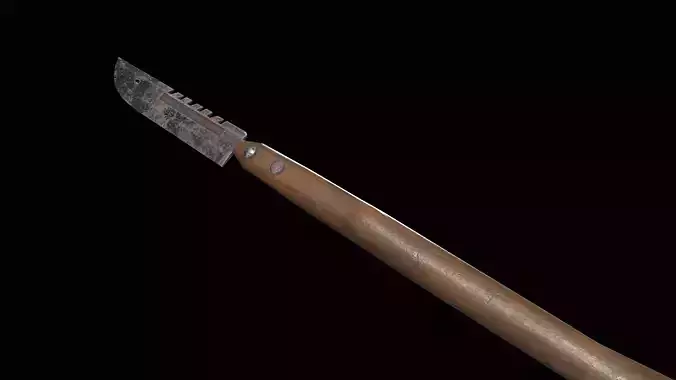1/9
This improvised blade is designed to look like the kind of tool or weapon assembled in a workshop, a barn, or a makeshift crafting space—something created out of necessity rather than manufactured with precision. The blade carries uneven surface wear, patches of rust, and a roughened texture that suggests it has seen harsh use and poor storage. The jagged spine and the hole near the tip reinforce the idea that this blade was never intended for elegance. It is a repurposed piece of metal, cut down, reshaped, and bolted into service.
The handle is carved from a single piece of wood, sanded only enough to be comfortable in the hand, but still full of small imperfections: dents, subtle bends, tool marks, and the worn grain of a handle that has existed far longer than the blade attached to it. The bolts securing the metal to the wood are mismatched and weathered, hinting at repairs and replacements over time. Viewed from a distance, the weapon appears straightforward; examined up close, it tells a story of improvisation, survival, and limited resources.
This model fits naturally into survival games, post-apocalyptic environments, low-tech combat systems, and scenes where handmade equipment is more common than factory-produced gear. It can serve as a melee weapon, a crafting prop, or environmental clutter that helps build a sense of desperation and resourcefulness.
REVIEWS & COMMENTS
accuracy, and usability.










